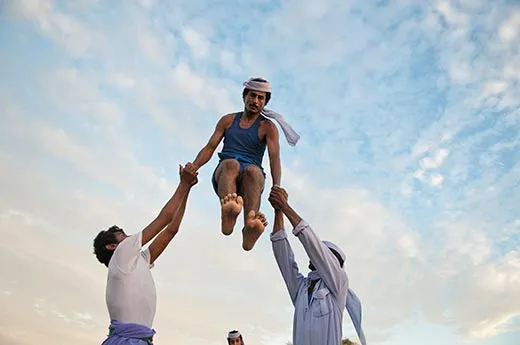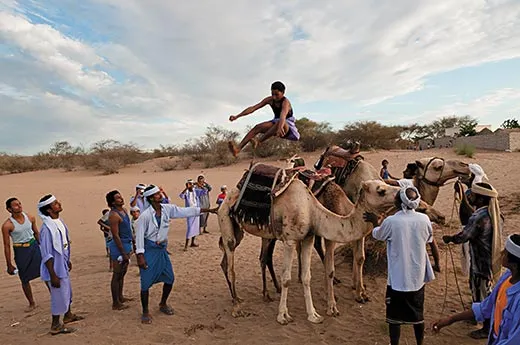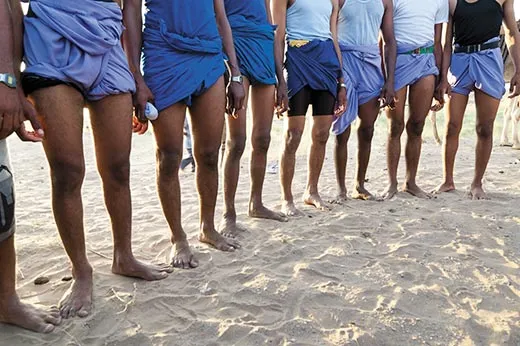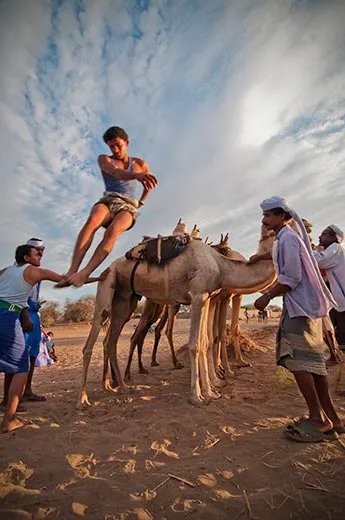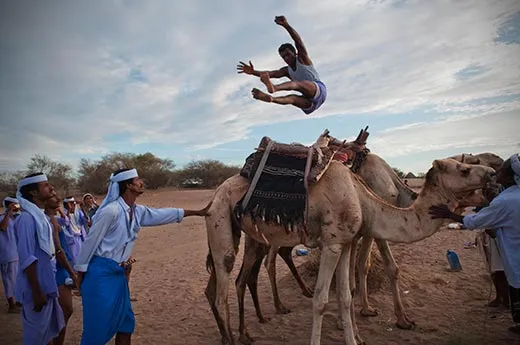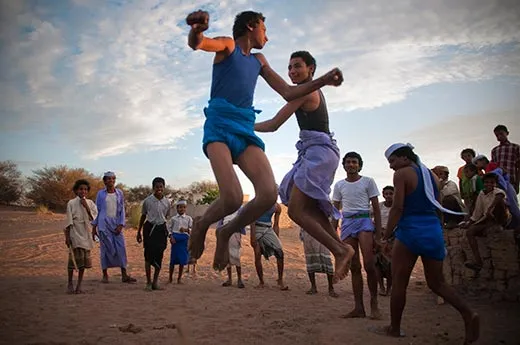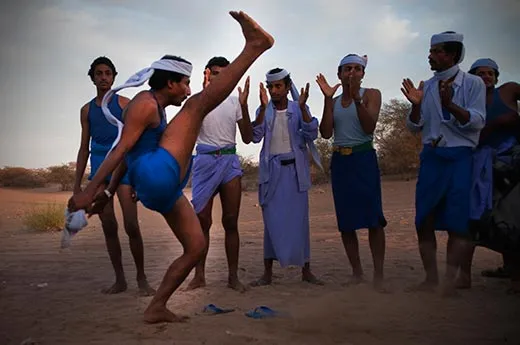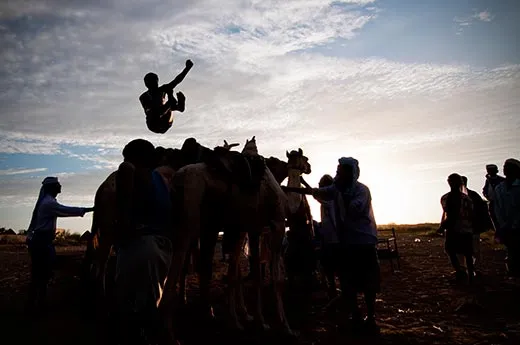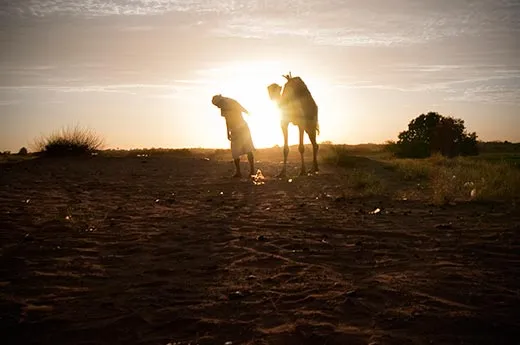The Sport of Camel Jumping
In the deserts of Yemen, Zaraniq tribesmen compete to leap camels in a single bound
/https://tf-cmsv2-smithsonianmag-media.s3.amazonaws.com/filer/Camel-Jumping-tradition-631.jpg)
Among the members of the Zaraniq tribe on the west coast of Yemen are, apparently, the world’s only professional camel jumpers. “This is what we do,” says Bhayder Mohammed Yusef Qubaisi, a champion bounder. The presumably ancient sport was recently documented by Adam Reynolds, a 30-year-old photojournalist from Bloomington, Indiana.
Reynolds spent six months in Yemen before being deported this past May, he believes for photographing leaders of a secessionist movement. Politically, Yemen is troubled, with a repressive but weak government beleaguered by insurgents in the largely lawless northern and southern regions. U.S. authorities have expressed concern that a large number of Al Qaeda and other terrorists operate there.
The Zaraniq live in the Tihama-al-Yemen, a desert plain on the Red Sea, and they are mostly poor; Qubaisi’s home is a one-room hut. To see the daredevils in action, Reynolds traveled a dirt track to a village southeast of the coastal city of al-Hudaydah. “It was pretty amazing,” he says of the acrobatic athletics. “They did it with such ease and grace. Afterward, though, I wondered why there hasn’t been a Yemeni long jump Olympic champion yet.”
Brandon Springer is a Smithsonian editorial intern. This is photojournalist Adam Reynolds’ first appearance in the magazine.
Planning Your Next Trip?
Explore great travel deals
Smithsonian magazine participates in affiliate link advertising programs. If you purchase an item through these links, we receive a commission.
